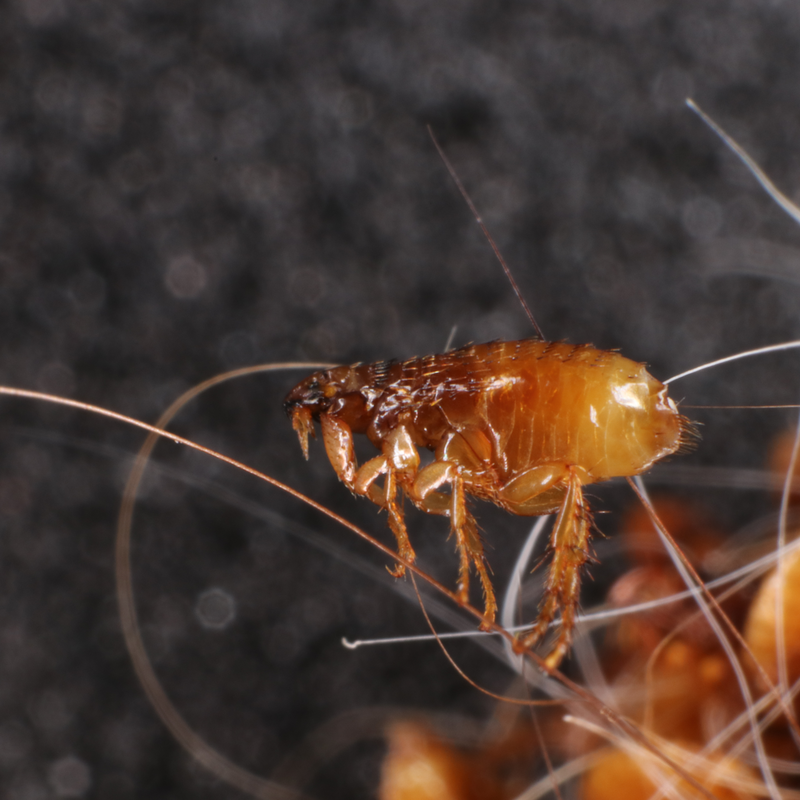
What is the Bartonella grahamii pathogen?
The Bartonella grahamii pathogen is a bacterium and belongs to the Bartonella genus. These are bacteria that can be transmitted, for example, by fleas and can also trigger a broad spectrum of diseases in humans. The Bartonella grahamii pathogen can cause diseases especially in voles. However, it is also suspected that the Bartonella grahamii pathogen can cause infections in humans (zoonotic). For the first time the Bartonella grahamii pathogen was isolated in Great Britain and has since been detected all over the world.
How was the Bartonella grahamii pathogen isolated?
The Bartonella grahamii pathogen is found in rodents worldwide and is one of the most widespread haemotrophic bacteria found in wild rodents. Many species of mice and voles are particularly affected, and the bacterium can be transmitted by the rodent flea Ctenophthalmus nobili. The Bartonella grahamii pathogen, which infects rodents, has high genetic diversity over short geographical distances. The bacterium Bartonella grahamii could also be detected in Ixodes ricinus ticks .
For the first time, the Bartonella grahamii pathogen could be isolated from a wood mouse in Sweden. To prepare bacterial strain suspensions, bacteria were harvested from haematin agar plates after four days and stored at -80 °C in a buffer containing 150 mM NaCl, 50 mM Tris (pH 7) and 11.2 per cent glycerol. By plating out serial dilutions, the number of viable bacteria of the frozen stock solutions could be determined. Extraction of DNA from the bacteria was achieved by culturing on haematin agar plates. This process took about 5 to 10 days. It was found that is composed of a circular 2.3 Mb chromosome and a 28 kb plasmid, pBGR3. The Bartonella grahamii pathogen is slightly smaller in size than the 2.6-Mb genome, which is closely related to Bartonella tribocorum.
What diseases can be caused by the Bartonella grahamii pathogen in humans?
The Bartonella grahamii pathogen can cause a so-called cat disease (Bartonellosis) in humans. Typically, this is diagnosed as a Bartzonella henselae infection. A Bartonella grahamii infection can be transmitted to humans through scratch and/or bite wounds from infected cats. This is conceivable, for example, if the cat carries infected rodent tissue on its claw. The cat is a so-called reservoir host. This means that the cat carries the pathogen in itself, but does not usually contract the disease itself.
What are the symptoms of a Bartonella grahamii infection in humans?
The following symptoms can be caused by a Bartonella grahamii infection:
- enlarged lymph nodes,
- Fever,
- Fatigue.
Due to
the rather unspecific symptoms, it is rather difficult to diagnose a Bartonella
grahamii infection. It is therefore important to raise more
clinical, but also public awareness of the zoonotic
threat of some Bartonella species. It is suspected
that the Bartonella grahamii pathogen can cause many infections,
which, however, remain largely asymptomatic unless it is
an immunocompromised patient.
How is a Bartonella grahamii infection diagnosed?
Current clinical diagnostic methods are so far hardly suitable for detecting the Bartonella grahamii bacterium. Cultivation of the bacterium proves to be challenging and takes several days to weeks to produce visible colonies. Serology also hardly offers the possibility to detect the infection with certainty, especially if the patient's immune system is weakened. Serology generally waits for the immune response of the host to detect a Bartonella infection. In the presence of an infection, the immune system produces IgG and IgM antibodies to fight the disease. Some methods such as the immunofluorescent test (IFA) or the enzyme immunoassay (EI) make use of these antibodies to detect a Bartonella infection. However, some Bartonella species, such as B. grahamii, are able to evade this immune response. . This is mainly because they are usually only present in small quantities and pursue evasion strategies. For example, they retreat into the red blood cells. Even if antibodies can be detected by serology, this does not necessarily mean that Bartonella pathogens are actively present.
How is a Bartonella grahamii infection treated?
Depending on the degree of expression, a Bartonella grahamii infection can resolve spontaneously in people. This usually takes between 2 and 4 months. Like other Bartonella diseases, a symptomatic Bartonella grahamii infection can be treated with antibiotics . The following antibiotics have been shown to be effective :
- Ciprofloxacin,
- Gentamicin,
- Rifampin,
- Trimethoprim,
- Sulfamethoxazole.
How can you protect yourself from a Bartonella grahamii infection?
There are risk factors that can lead to infection of almost any type of Bartonella infection, and should therefore, if possible, be avoided . These include:
- contact with fleas, ticks, biting flies or other arthropods,
- contact with pets or other animals, especially if they are in the wild,
- People, who naturally have a rather weaker immune system, such as younger children, adolescents and/or ageing adults, have a stronger tendency to develop a Bartonella infection,
- Cancer patients, people with immune diseases and/or patients who have to take immunosuppressants for medical reasons also have a stronger tendency to develop Bartonella infection.
